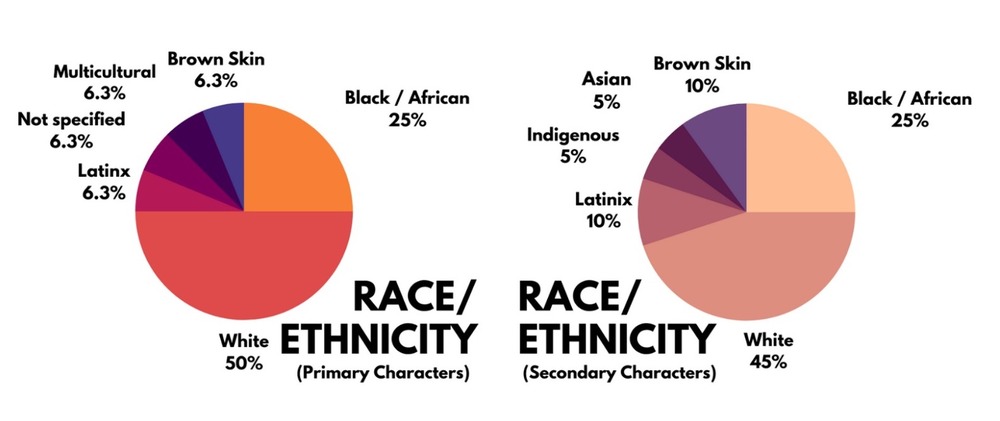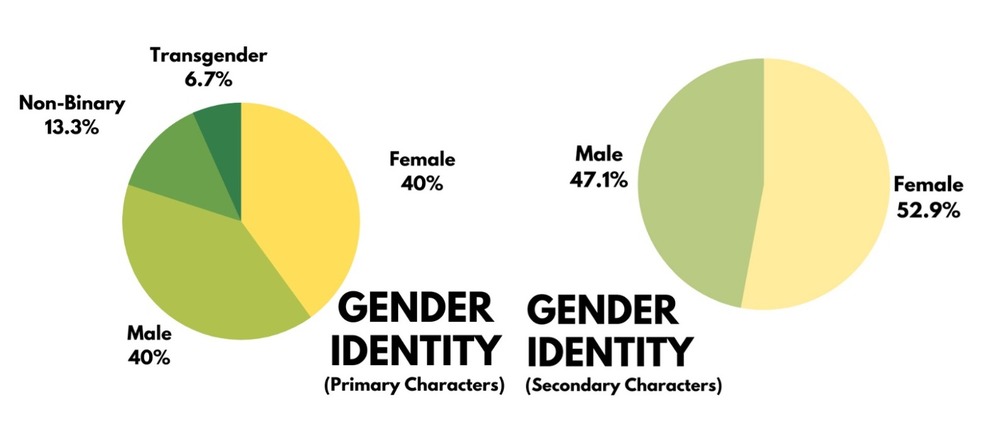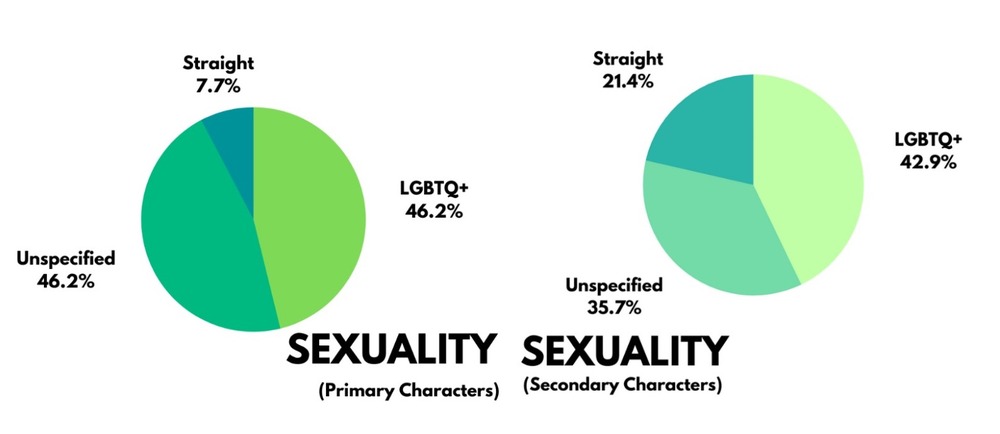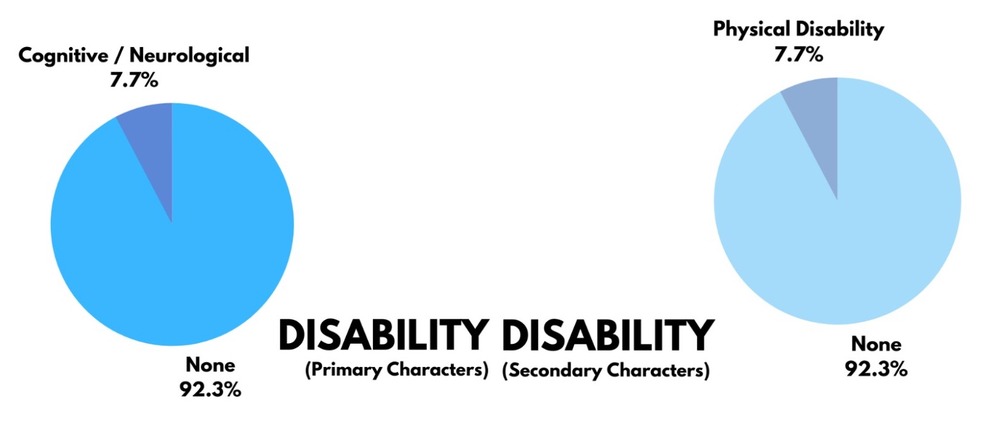What We Found
Though we worked with quite a small selection of books (only 13 in total!), we were able to draw a few interesting conclusions about them.
Overall, the section of books chosen was fairly diverse, maybe even more diverse than that of similar shelves elsewhere. Although there is of course room still for improvement. We saw a range of ethnicities in the books, as well as a good representation of different gender identities and many LGBTQ+ characters. On the downside, there were nearly no depictions of people with disabilities or diverse religions. As for the authors, they were mostly diverse in some categories, such as gender and sexuality, but less so in others. On many occasions, the authors were inspired in their writing by their own experiences.
Still, a general diversity, though expandable in the future, is reflected by both authors and book characters, enabling the books to be both windows and mirrors for many readers. However, the books we cataloged also portrayed a variety of stories that can appeal to a wide readership who can see diversity in others' lives or find themselves within the novels.
Some more detail
Race and ethnicity
This category was only moderately diverse. About half of the primary and secondary characters are white, and a quarter are Black/African. For primary characters, there was only one Latinx character, one multi-cultural character, and one brown-skinned character represented in our sample. For the secondary characters, there was one Indigenous character, one Asian character, two Latinx characters, and two brown-skinned characters represented in the books. While it is encouraging to see seven different races or ethnicities represented in the thirteen novels, we would like to see a broader range of representation in the future.
Gender identity
Though this category could have been more diverse, about 20% of primary characters, and no secondary characters, identify outside the gender binary in this selection of books. It was interesting to note, however, that the representation of male and female characters was basically equal across the thirteen cataloged books. The three books featuring transgender and non-binary characters are Meet Cute Diary by Emery Lee, We Are Not Broken by George M. Johnson, and The Boi of Feather and Steel by Adan Jerreat-Poole.
Sexuality
This is a category we found to be moderately diverse. It was surprising and encouraging to see that almost half of the characters in our cataloged books were part of the LGBTQ+ community. The number of LGBTQ+ primary characters was equal to the number of those with unspecified orientation. Similarly, our secondary characters were more often a part of the LGBTQ+ community than not. We found that our books did not discuss orientations or identities that tend to be less well-understood, such as asexuality. However, we are hopeful that the findings in this exhibit are indicative of a continuing increase in the diversity of characters' orientations in contemporary YA literature.
Disability
The diversity of representation of disability in our books was sadly very limited. There was only one cognitive/neurological disability/condition and one physical disability, shown. The Extraordinaries by TJ Klune was the only book to feature a primary character with a disability, in this case, Nick Bell, who has attention deficit hyperactivity disorder (ADHD). You Should See Me in a Crown by Leah Johnson depicts a secondary character with a physical disability.
What about the authors?
Although the books we selected form a rather small, alphabetically ordered sample, we were able to establish some interesting observations about the diversity of their 14 authors. To do this, we mainly looked at three aspects: race/ethnicity, gender, and sexuality.
The authors were not very diverse in their ethnicities, as over two-thirds of them are white (the other five authors are black/African or multiracial). However, there is good gender parity, with a few non-binary voices as well. These fourteen authors also represent a diversity of sexualities. Two authors have a cognitive/neurological disability (ADHD). One author is Muslim.
Overall, we would love to have seen more diversity in authors whose books we analysed, especially in categories such as race/ethnicity, religion and disability.





